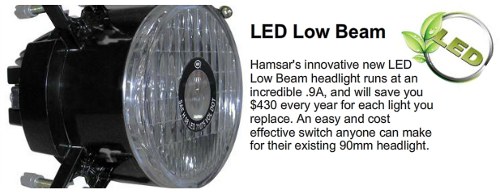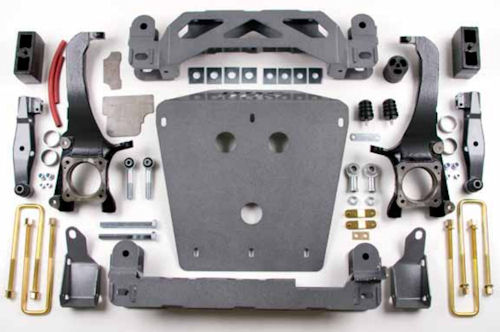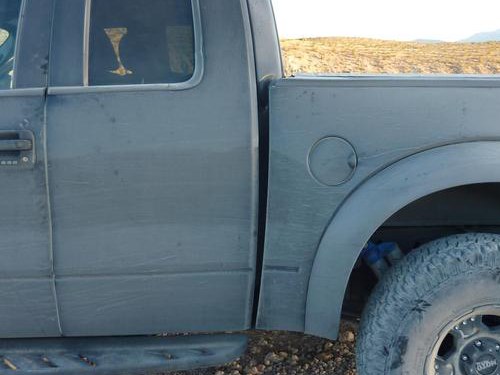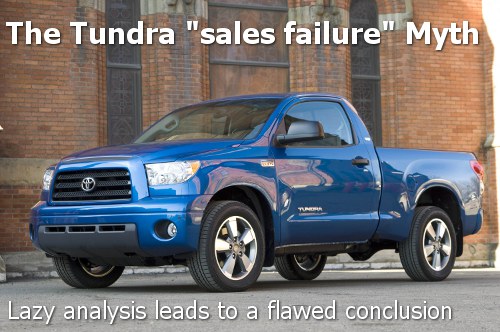LED Replacement Headlights – Worth The Cost?
LED lights and bulbs have begun to creep into almost every area of our lives, and automotive illumination is no exception. Typically, the LED lights found on cars and trucks are used either as brake lights or running lights, as well as interior accents. The aftermarket, however, has been a bit braver in seeking out new applications for exploiting this particular lighting technology, with LED replacement headlights now appearing for several different vehicle brands. Companies like Hamsar are offering plug-and-play replacement LED headlights, including a full housing, for a range of older vehicles that use a sealed beam design.

Hamsar LED replacement low-beam headlights promise big savings - it's a mystery how they arrive at the $430 savings number
LED Headlights – Is There An Advantage?
What are the purported advantages of LED headlights? Read more…
BDS Suspension High Clearance Lift Kits for the Toyota Tundra
BDS Suspension has put together two lift kits for the Toyota Tundra that are aimed at off-road enthusiasts who are looking for something a little more radical than the standard two or three-inch lift. BDS now offers 4.5-inch and 7-inch High Clearance (HC) lift kits that are advertised as being suitable for both daily driving and rock climbing.
What’s In The Box

BDS Suspension High Clearance lift kit components.
Both the BDS Suspension 4.5-inch and 7-inch HC lift kits are very complete, offering several boxes of components designed to transform the Tundra from its stock suspension setup. The kits come with front and rear crossmembers, new steering knuckles, a belly pan, brake relocation hardware, sway bay end links and end link spacers, new bump stops, strut extensions, strut spacers and lift blocks. The kit also comes with twin tube custom-valved hydraulic shocks for the rear (either BDS 5500 or 9500 series). Read more…
GM Launching New Sierra/Silverado in 2013
GM’s last major redesign of the Sierra and Silverado was in 2007. At that time, GM’s new truck design was quickly overshadowed by new designs from Toyota, Chrysler, and then Ford in the following year. Perhaps in an effort to “get the jump” on competition, GM will begin re-tooling plants in late 2012 to build an all-new 2013 model of the Sierra and Silverado, according to Automotive News.
This 2013 timing comes as a bit of a surprise – during the throws of GM’s 2009 bankruptcy, it was learned that GM had stalled almost all new product development plans to conserve operating capital. It was thought that this would slow GM’s next major redesign of their full-size trucks until 2014, but evidently GM has managed to overcome a slow start and will be building new trucks one year earlier than anyone expected.
Speaking of expectations, here are some features that GM will be including in their newest trucks: Read more…
F-150 Raptor Owners Report Frame Problems – Design Flaw?
Ford Raptor enthusiast’s forum RaptorForumz.com has an interesting thread that show photos of F-150 Raptors with bent frames, which owners allege are a design defect.
UPDATE: One of the F150 owners told me that the frame was bent on an infamous “kicker” on the road between Barstow and Vegas. You can see video of this kicker below.

The frame on this Raptor F-150 is bent - was it owner abuse or bad design?
Evidently, this Raptor owner did some high-speed driving on off-road trails…similar to what you see in this Ford marketing video:

According to the forum post, numerous drivers who have driven aggressively off-road have ended up with bent frames. These drivers are upset because they feel their trucks should be able to handle the trails they drove without damage – after all, Ford shows this type of driving in all the Raptor promotional videos.
Even worse, many Ford dealers are refusing to repair these bent frames because they’re alleging vehicle abuse. Ford dealers – and Ford Motor Company, by proxy – argue that no one should ever jump their truck, drive at high speeds off road, etc., because this is unnecessary and will definitely lead to damage.
SO, it all boils down to this: Raptor owners want to drive their trucks hard, but Ford doesn’t want to pay for damage caused by vehicle abuse. Who’s right?
More photos of Raptor F-150 frame damage and both arguments below. Read more…
The Tundra’s “Sales Failure” Story Is A Myth
I’ve noticed a fair amount of commentary lately about the Tundra’s status as a “sales failure,” (CNN ran an article a few days ago that I won’t link to here because it’s so stupid) and it’s shocking to me that so many otherwise smart people in the auto news industry can make such a silly argument. The Tundra’s sales definitely aren’t exemplary, but they certainly aren’t a “failure” when you consider the history of events between the Tundra’s debut in 2007 and today.

Lazy analysis of truck sales figures leads some people to conclude that the Tundra has been a failure, but that analysis overlooks a few facts.
The worst part is, this silly story about the Tundra’s “sales failure” isn’t going away anytime soon. The Tundra plant was only running at 30% capacity in April and May, it’s only been running at 50% capacity for June, and it’s not expected to get back to 100% until August/September. That means that 2011 probably isn’t going to be a good year in terms of total Tundra sales.
Still, looking exclusively at sales figures to make a determination about the success of the Tundra is like reading a box score instead of watching the game: you get a sense of what happened, but you still miss a lot. Read more…

